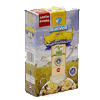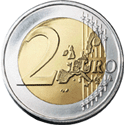
In
Spain, the measure for weight is the
KILOGRAMO or
KILO
(Un kilo = 1000 gramos) and the measurement for liquid is
the
LITRO - Póngame un
kilo de naranjas - I'll have a kilo of oranges / Póngame medio kilo de manzanas
- I'll have a kilo of apples
- Póngame un litro de leche - I'll have a litre of milk / Póngame medio litro de vino
- I'll have a litre of wine
 Other
articles are described by their container.
Other
articles are described by their container.
 |
|
 |
|
 |
|
 |
|
Una lata de tomate
A can of tomato sauce
|
|
Una botella de vino
A bottle of wine
|
|
Un vaso de cerveza
A glass of beer
|
|
Un paquete de arroz
A packet of rice
|
 Practise
your Spanish in markets by asking for things:
Practise
your Spanish in markets by asking for things:
¿Cuánto cuesta... ? / ¿Qué precio
tiene...? / ¿Cuánto vale...? / ¿A cuánto está....?
And you may hear...
Vale... / El precio es.... /
Cuesta... / Está a ...
¿Qué precio tienen las fresas?  Están a 5 euros el kilo
Están a 5 euros el kilo
How much are the strawberries? They're at 5 euros a
kilo
¿A cuánto está el cordero?  Está a 7 euros el kilo
Está a 7 euros el kilo
How much is the lamb?
It's at 7 euros a kilo